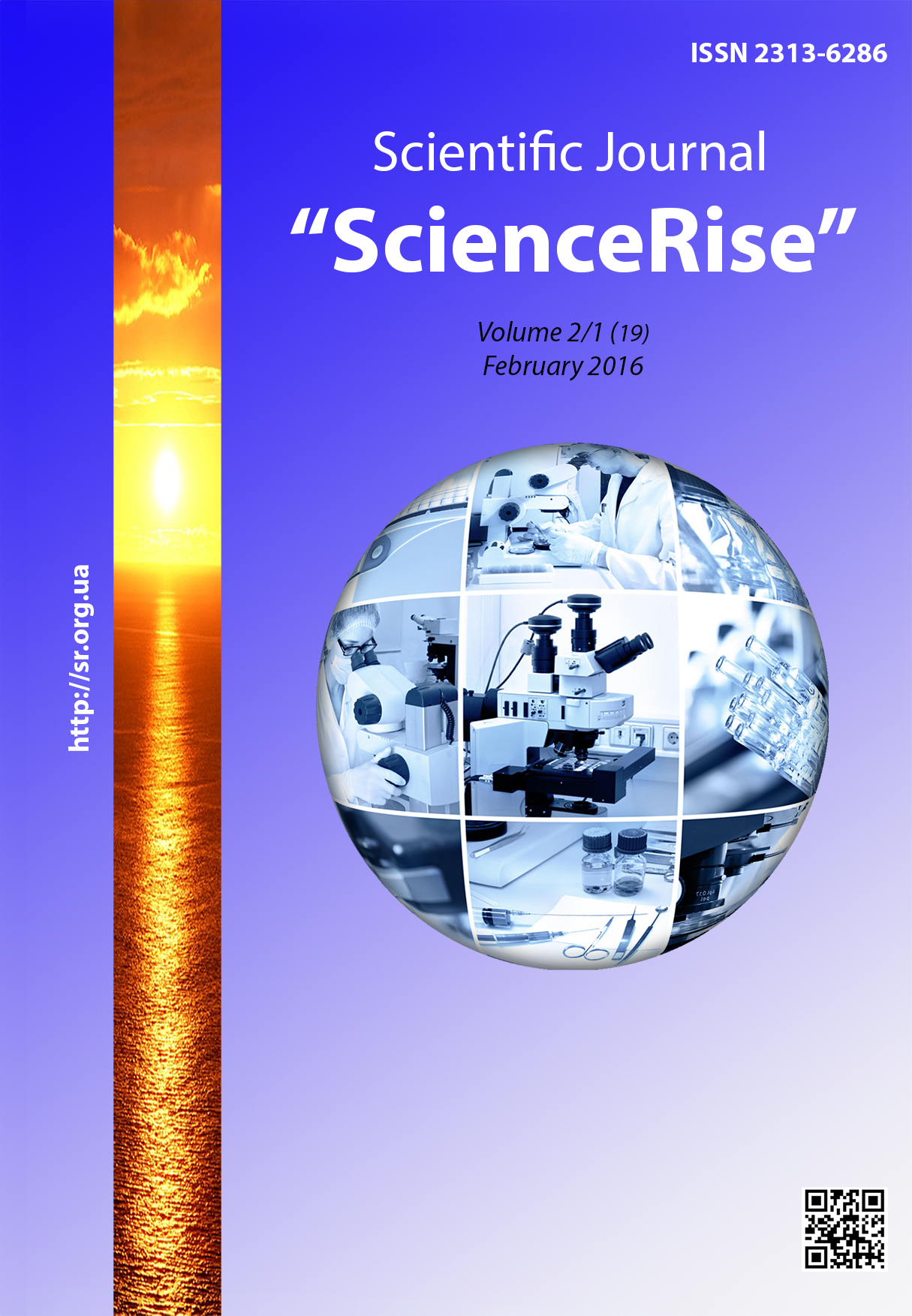The dorsal root damage identifications by the longitudal distribution of the evoked potentials of spinal cord
DOI:
https://doi.org/10.15587/2313-8416.2016.60275Keywords:
spinal cord, evoked potentials, amplitude, longitudinal distribution, deafferentation, dorsal rootAbstract
In experiments on cats we recorded somatosensory evoked potentials (SEP) of the spinal cord (SС) in response to stimulation of peripheral nerves of hindpaw in normal cases and sequential transection of the dorsal roots of lumbosacral intumescence. It is shown that the point of breaks of dorsal roots in case of SC injuries can be studied by measuring of the longitudinal distribution of its SEP. We explain the reason for the shifts of the maxima in the longitudinal distribution of the answers at segmental deafferentation
References
Qin, W., Bauman, W. A., Cardozo, C. (2010). Bone and muscle loss after spinal cord injury: organ interactions. Annals of the New York Academy of Sciences, 1211 (1), 66–84. doi: 10.1111/j.1749-6632.2010.05806.x
Chew, D. J., Leinster, V. H. L., Sakthithasan, M., Robson, L. G., Carlstedt, T., Shortland, P. J. (2008). Cell death after dorsal root injury. Neuroscience Letters, 433 (3), 231–234. doi: 10.1016/j.neulet.2008.01.012
Hu, Y., Liu, H., Luk, K. D. (2011). Time-frequency analysis of somatosensory evoked potentials for intraoperative spinal cord monitoring. Journal of Clinical Neurophysiology, 28 (5), 504–511. doi: 10.1097/wnp.0b013e318231c15c
Shugurov, О. А., Shugurov, O. O. (2006). Evoked potentials of spinal cord. Dnipropetrovsk: Sciense and Education, 319.
Regan, D., Regan, M. P. (2009). Evoked Potentials: Recording Methods. Encyclopedia of Neuroscience, 29–37. doi: 10.1016/b978-008045046-9.00317-x
Cuddon, P. A., Delauche, A. J., Hutchison, J. M. (1999). Assessment of dorsal nerve root and spinal cord dorsal horn function in clinically normal dogs by determination of cord dorsum potentials. Am. J. Vet. Res., 60 (2), 222–226.
Yanni, D. S., Ulkatan, S., Deletis, V., Barrenechea, I. J., Sen, C., Perin, N. I. (2010). Utility of neurophysiological monitoring using dorsal column mapping in intramedullary spinal cord surgery. Journal of Neurosurgery: Spine, 12 (6), 623–628. doi: 10.3171/2010.1.spine09112
Manjarrez, E., Jimenez, I., Rudomin, P. (2003). Intersegmental synchronization of spontaneous activity of dorsal horn neurons in the cat spinal cord. Exp. Brain Res., 148 (3), 401–413.
Quiroz-González, S., Segura-Alegría, B., Guadarrama-Olmos, J. C., Jiménez-Estrada, I. (2014). Cord Dorsum Potentials Evoked by Electroacupuncture Applied to the Hind Limbs of Rats. Journal of Acupuncture and Meridian Studies, 7 (1), 25–32. doi: 10.1016/j.jams.2013.06.013
Shugurov, O. O., Shugurov, O. A. (2006). The use of pre-advance averaging to improve the information content of registrations in the study of evoked potentials. Human physiol, 32 (5), 619–622.
Rudomin, P. (2009). In search of lost presynaptic inhibition. Experimental Brain Research, 196 (1), 139–151. doi: 10.1007/s00221-009-1758-9
Laumonnerie, C., Tong, Y. G., Alstermark, H., Wilson, S. I. (2015). Commissural axonal corridors instruct neuronal migration in the mouse spinal cord. Nature Communications, 6, 7028. doi: 10.1038/ncomms8028
Pinto, V., Szucs, P., Lima, D., Safronov, B. V. (2010). Multisegmental A - and C-Fiber Input to Neurons in Lamina I and the Lateral Spinal Nucleus. Journal of Neuroscience, 30 (6), 2384–2395. doi: 10.1523/jneurosci.3445-09.2010
Côté, M.-P., Detloff, M. R., Wade, R. E., Lemay, M. A., Houlé, J. D. (2012). Plasticity in ascending long propriospinal and descending supraspinal pathways in chronic cervical spinal cord injured rats. Frontiers in Physiology, 3. doi: 10.3389/fphys.2012.00330
Wall, P. D. (1994). Control of Impulse Conduction in Long Range Branches of Afferents by Increases and Decreases of Primary Afferent Depolarization in the Rat. European Journal of Neuroscience, 6 (7), 1136–1142. doi: 10.1111/j.1460-9568.1994.tb00611.x
Aggelopoulos, N. C., Chakrabarty, S., Edgley, S. A. (2008). Presynaptic control of transmission through group II muscle afferents in the midlumbar and sacral segments of the spinal cord is independent of corticospinal control. Experimental Brain Research, 187 (1), 61–70. doi: 10.1007/s00221-008-1279-y
Réthelyi, M., Szentágothai, J. (1973). Distribution and cnnections of afferent fibres in the spinal cord. Vol. 2. Springer Berlin Heidelberg, 207–252. doi: 10.1007/978-3-642-65438-1_8
Downloads
Published
Issue
Section
License
Copyright (c) 2016 Олег Олегович Шугуров

This work is licensed under a Creative Commons Attribution 4.0 International License.
Our journal abides by the Creative Commons CC BY copyright rights and permissions for open access journals.
Authors, who are published in this journal, agree to the following conditions:
1. The authors reserve the right to authorship of the work and pass the first publication right of this work to the journal under the terms of a Creative Commons CC BY, which allows others to freely distribute the published research with the obligatory reference to the authors of the original work and the first publication of the work in this journal.
2. The authors have the right to conclude separate supplement agreements that relate to non-exclusive work distribution in the form in which it has been published by the journal (for example, to upload the work to the online storage of the journal or publish it as part of a monograph), provided that the reference to the first publication of the work in this journal is included.

